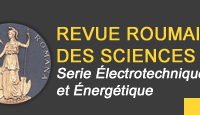Paper title: PERFORMANCES OF DIRECT REACTIVE POWER CONTROL TECHNIQUE APPLIED TO THREE LEVEL-INVERTER UNDER RANDOM BEHAVIOR OF WIND SPEED
Author(s): SALAH TAMALOUZT,
Abstract: A doubly fed induction generator (DFIG) driven by a variable speed wind turbine (WT) is presented in this paper. The DFIG is
supplied via a three-level inverter in its rotor, and controlled with a flexible algorithm based on fuzzy logic control (FLC)
combined with the direct torque (DTC), getting the direct reactive power control (DRPC) technique, thereby enjoying the
benefits of both at same time. The aim of this contribution is to analyze the performances and robustness of the proposed control
technique, which is applied to a three-level inverter. Indeed, the main objectives are to obtain at the generator output (AC) sine
waveforms signals with a low total harmonic distortion (THD), as well as minimum output voltages ripples, regardless of the
variation of the wind speed, as well as, the possibility of energy management, the active and reactive powers control by the
DFIG, and the usefulness of this machine as a local reactive power compensator. Some constraints are taken in to account to
reflect the real operation of a wind driven, such as the randomness behavior of the wind speed allowing the three operation
modes of the DFIG, i.e. sub, super and synchronous. Such operation is carried out with a successive and continuous manner,
with a particular focus on synchronous and overspeed modes. The captured wind power is optimized to extract the maximum
power using the appropriate maximum power point tracking (MPPT) algorithm, below a nominal turbine speed. We will be
acting on the pitch angle control, beyond the nominal turbine speed, whereas the power extraction maximization amounts to
regulate the power produced at its rate value. The simulation tests are performed under Matlab/Simulink and the results show
the effectiveness of the control strategy that leads to better performances of the system.
Keywords: Grid connected wind turbine conversion, Random behavior wind speed, Pitch angle control, Doubly fed induction
generator, Direct torque and reactive power control, Fuzzy logic control, Three-level inverter Year: 2019 | Tome: 64 | Issue: 1 | Pp.: 33-38
Full text : PDF (469 KB) |



